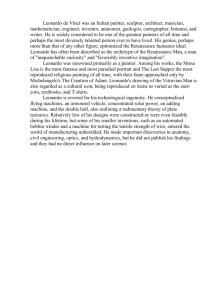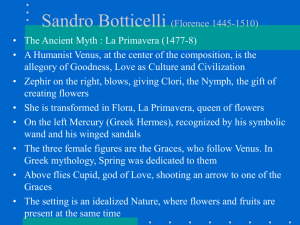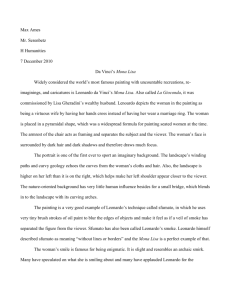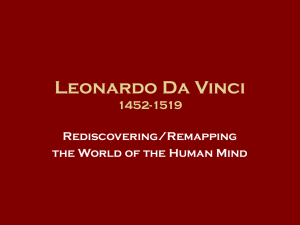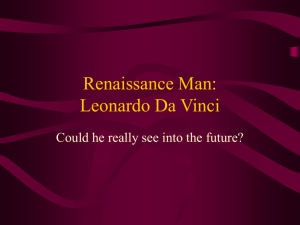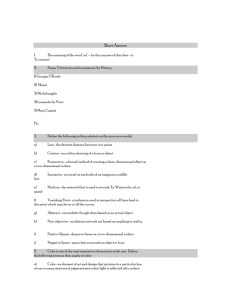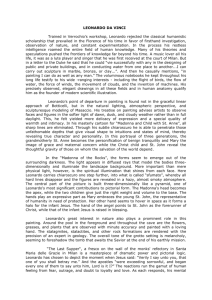Leonardo da Vinci
advertisement
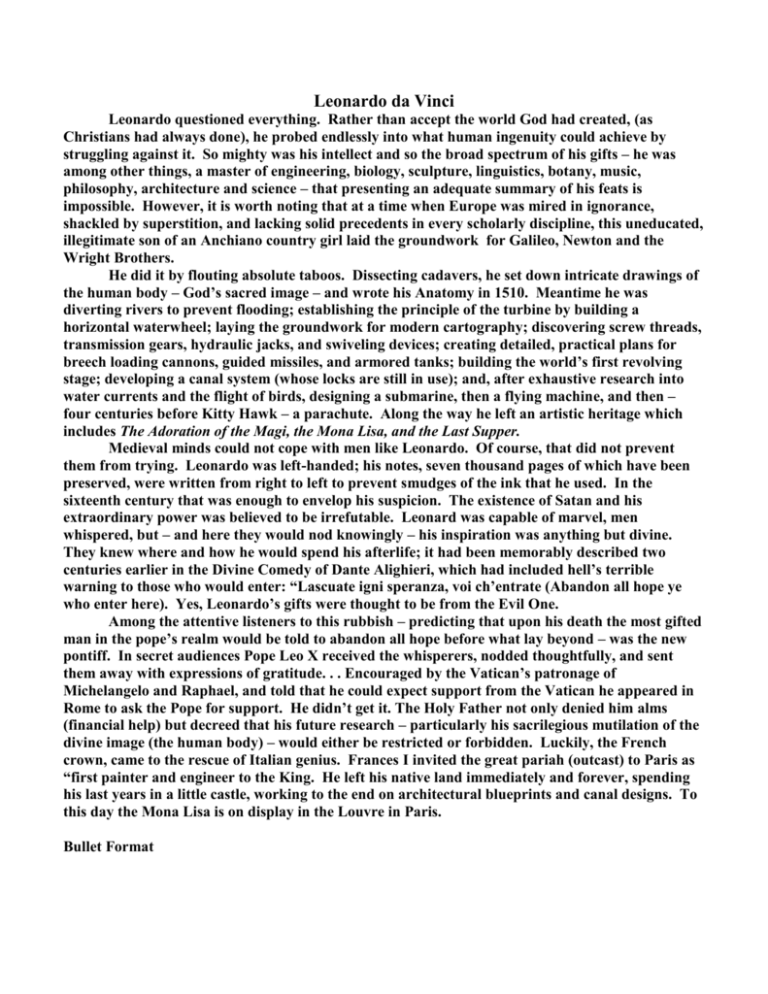
Leonardo da Vinci Leonardo questioned everything. Rather than accept the world God had created, (as Christians had always done), he probed endlessly into what human ingenuity could achieve by struggling against it. So mighty was his intellect and so the broad spectrum of his gifts – he was among other things, a master of engineering, biology, sculpture, linguistics, botany, music, philosophy, architecture and science – that presenting an adequate summary of his feats is impossible. However, it is worth noting that at a time when Europe was mired in ignorance, shackled by superstition, and lacking solid precedents in every scholarly discipline, this uneducated, illegitimate son of an Anchiano country girl laid the groundwork for Galileo, Newton and the Wright Brothers. He did it by flouting absolute taboos. Dissecting cadavers, he set down intricate drawings of the human body – God’s sacred image – and wrote his Anatomy in 1510. Meantime he was diverting rivers to prevent flooding; establishing the principle of the turbine by building a horizontal waterwheel; laying the groundwork for modern cartography; discovering screw threads, transmission gears, hydraulic jacks, and swiveling devices; creating detailed, practical plans for breech loading cannons, guided missiles, and armored tanks; building the world’s first revolving stage; developing a canal system (whose locks are still in use); and, after exhaustive research into water currents and the flight of birds, designing a submarine, then a flying machine, and then – four centuries before Kitty Hawk – a parachute. Along the way he left an artistic heritage which includes The Adoration of the Magi, the Mona Lisa, and the Last Supper. Medieval minds could not cope with men like Leonardo. Of course, that did not prevent them from trying. Leonardo was left-handed; his notes, seven thousand pages of which have been preserved, were written from right to left to prevent smudges of the ink that he used. In the sixteenth century that was enough to envelop his suspicion. The existence of Satan and his extraordinary power was believed to be irrefutable. Leonard was capable of marvel, men whispered, but – and here they would nod knowingly – his inspiration was anything but divine. They knew where and how he would spend his afterlife; it had been memorably described two centuries earlier in the Divine Comedy of Dante Alighieri, which had included hell’s terrible warning to those who would enter: “Lascuate igni speranza, voi ch’entrate (Abandon all hope ye who enter here). Yes, Leonardo’s gifts were thought to be from the Evil One. Among the attentive listeners to this rubbish – predicting that upon his death the most gifted man in the pope’s realm would be told to abandon all hope before what lay beyond – was the new pontiff. In secret audiences Pope Leo X received the whisperers, nodded thoughtfully, and sent them away with expressions of gratitude. . . Encouraged by the Vatican’s patronage of Michelangelo and Raphael, and told that he could expect support from the Vatican he appeared in Rome to ask the Pope for support. He didn’t get it. The Holy Father not only denied him alms (financial help) but decreed that his future research – particularly his sacrilegious mutilation of the divine image (the human body) – would either be restricted or forbidden. Luckily, the French crown, came to the rescue of Italian genius. Frances I invited the great pariah (outcast) to Paris as “first painter and engineer to the King. He left his native land immediately and forever, spending his last years in a little castle, working to the end on architectural blueprints and canal designs. To this day the Mona Lisa is on display in the Louvre in Paris. Bullet Format
